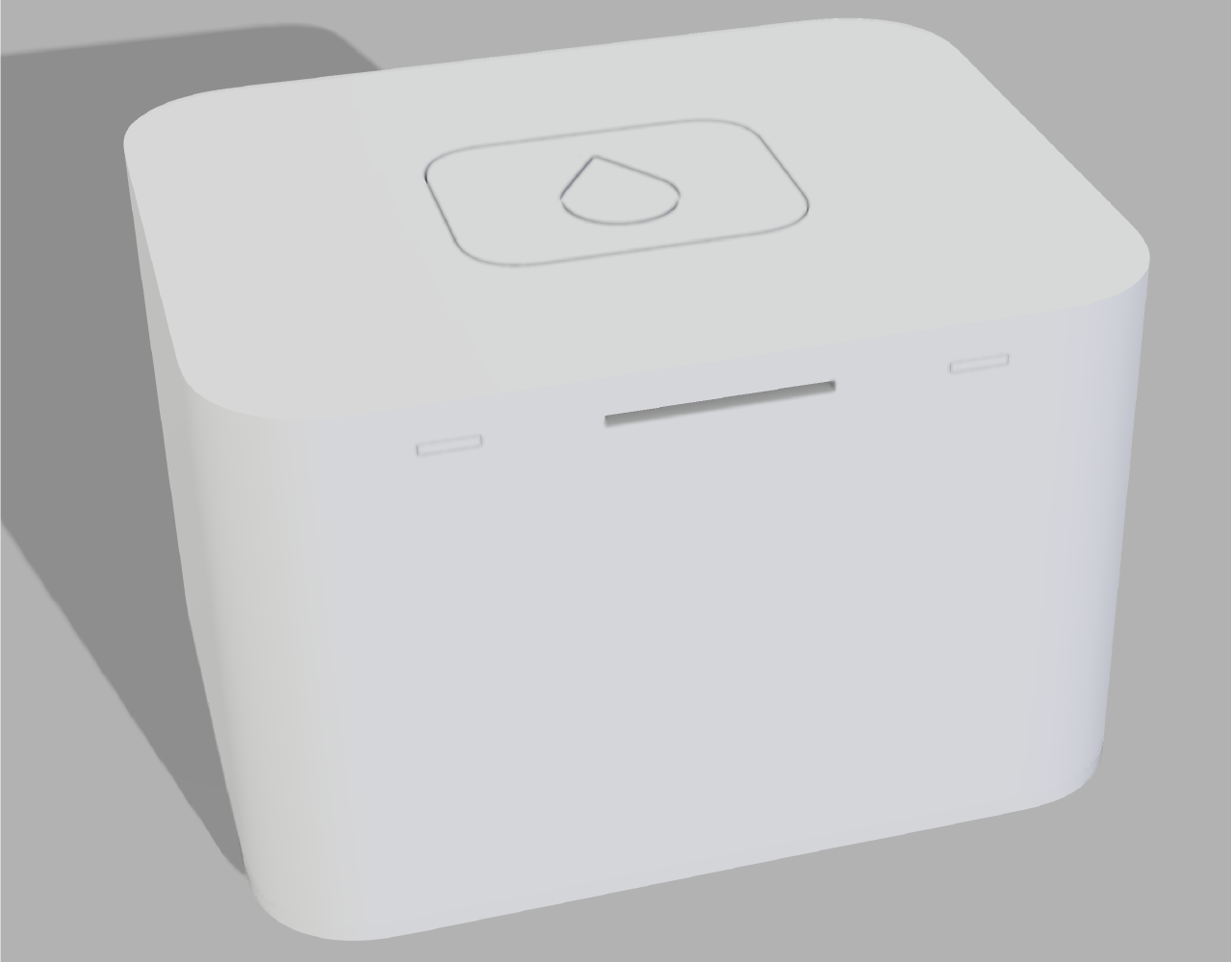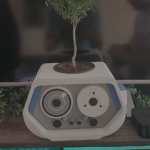
HERBIE Plant Pot
August 27, 2025"SEVERANCE PACKAGE" PUZZLE BOX
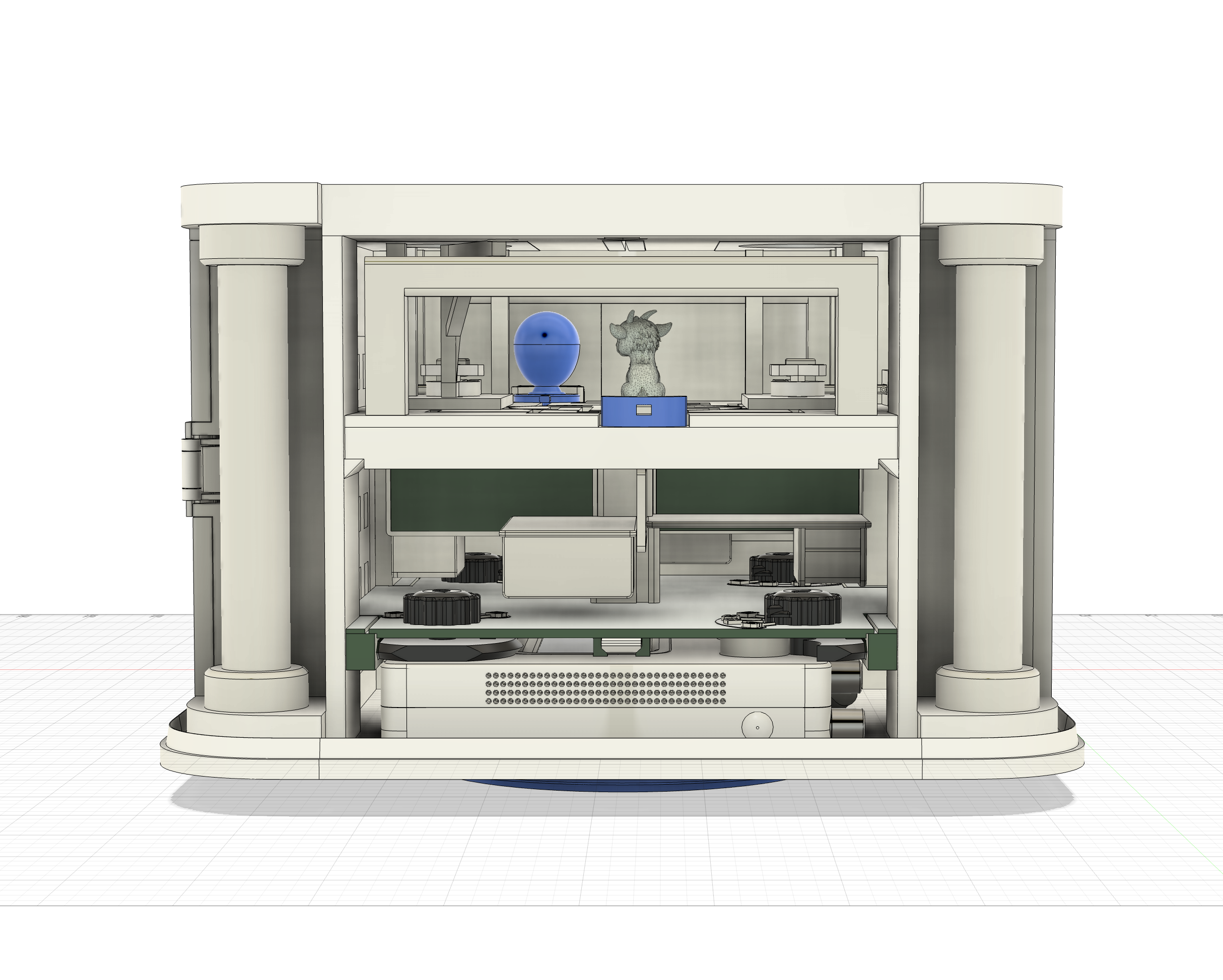
Designed puzzle box inspired by escape rooms and the TV show Severance. Keep scrolling to learn more about this design...
Technologies
Autodesk Fusion, Bambu Lab 3D Printing
Year
2025
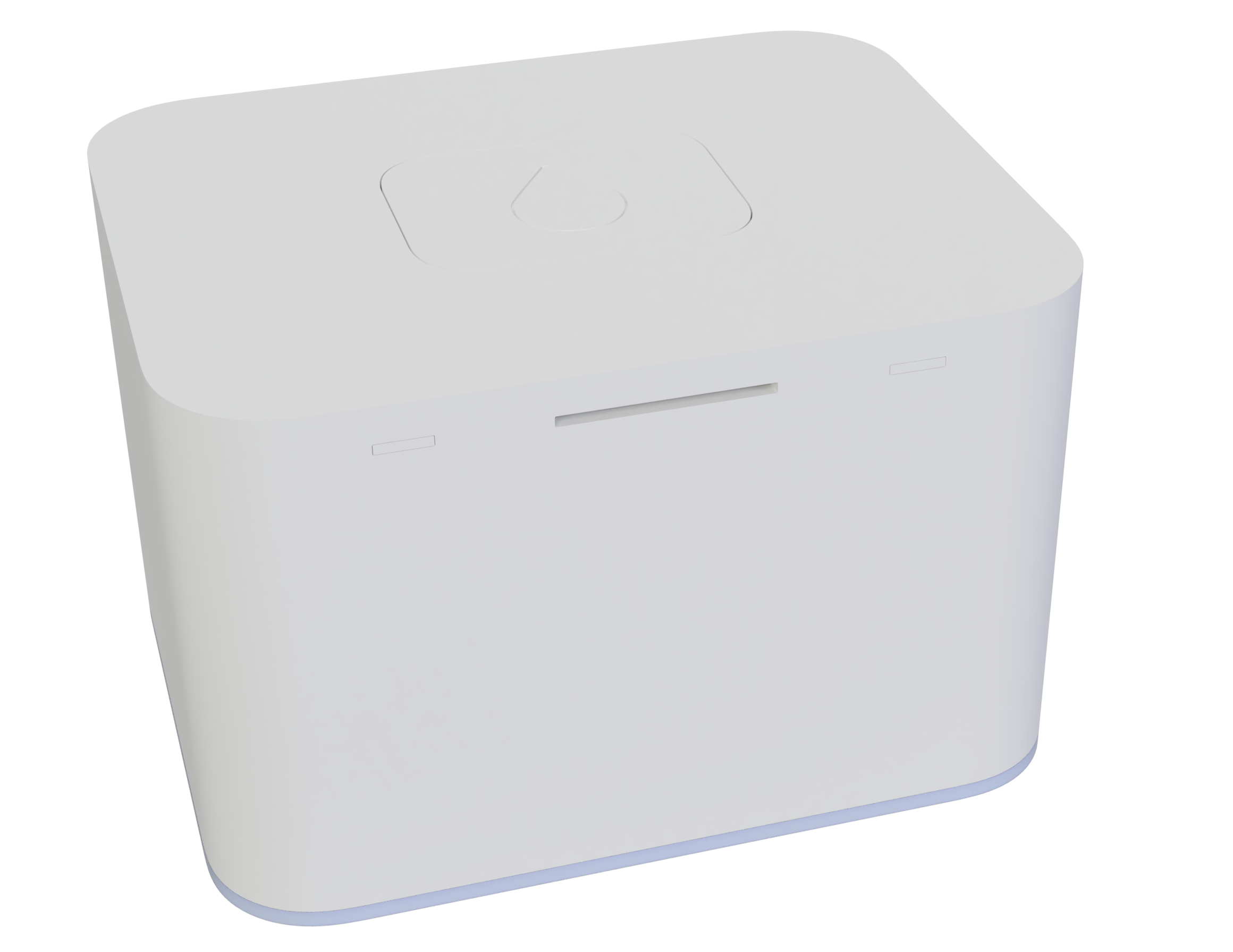
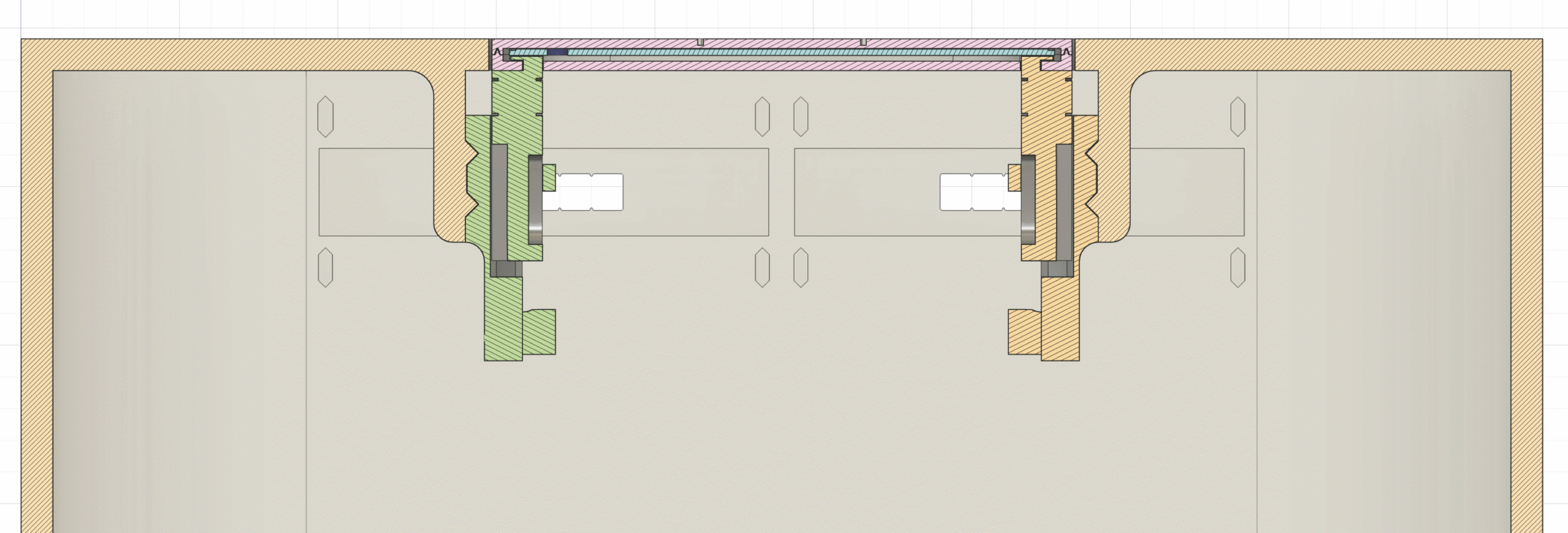
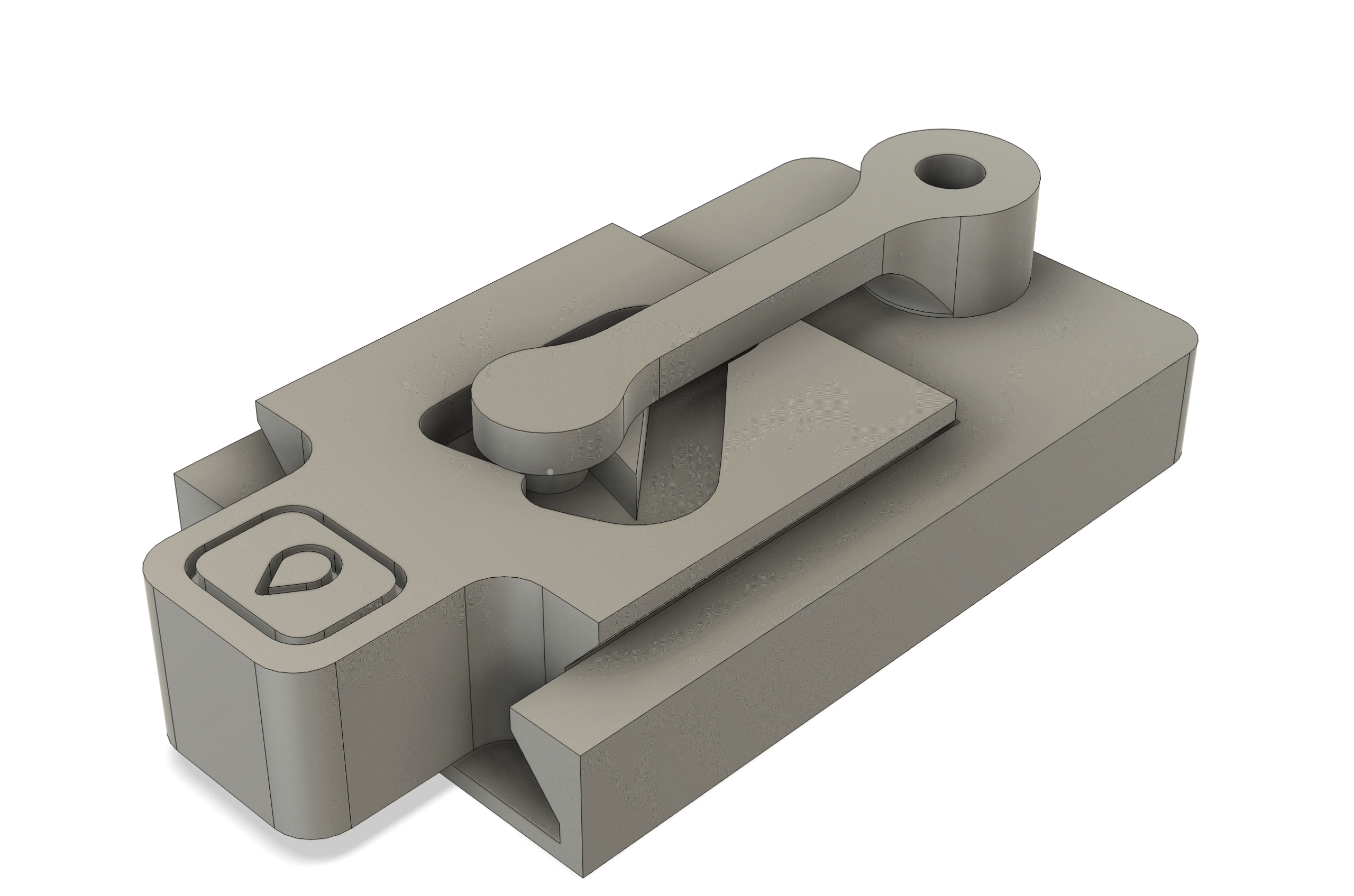
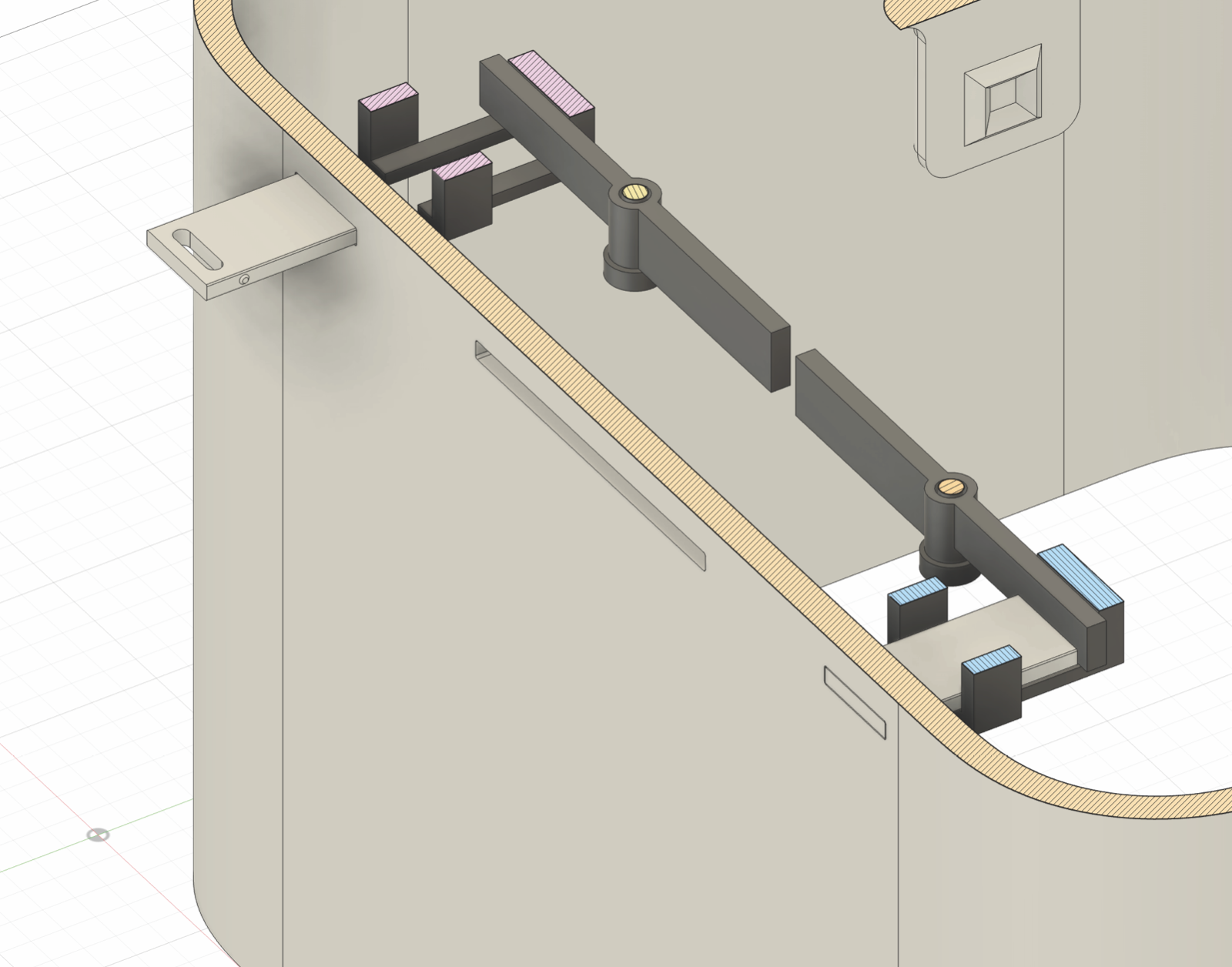
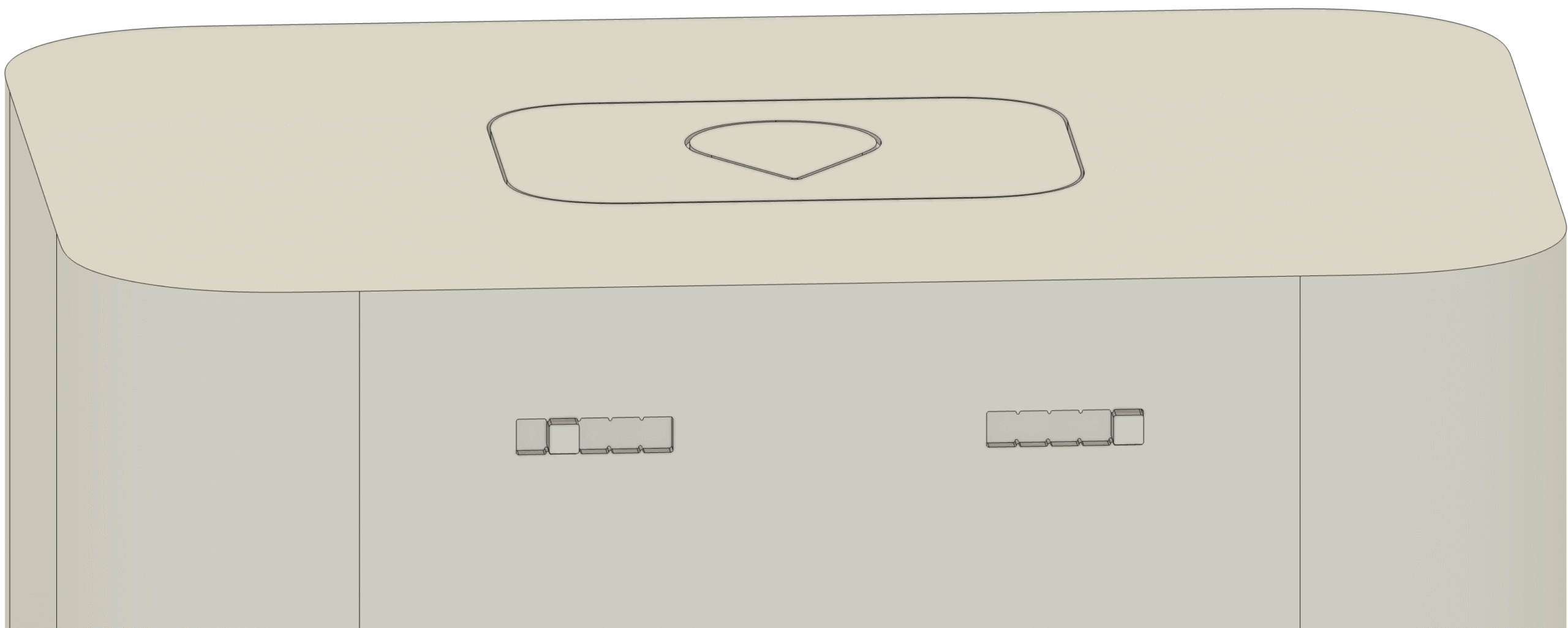

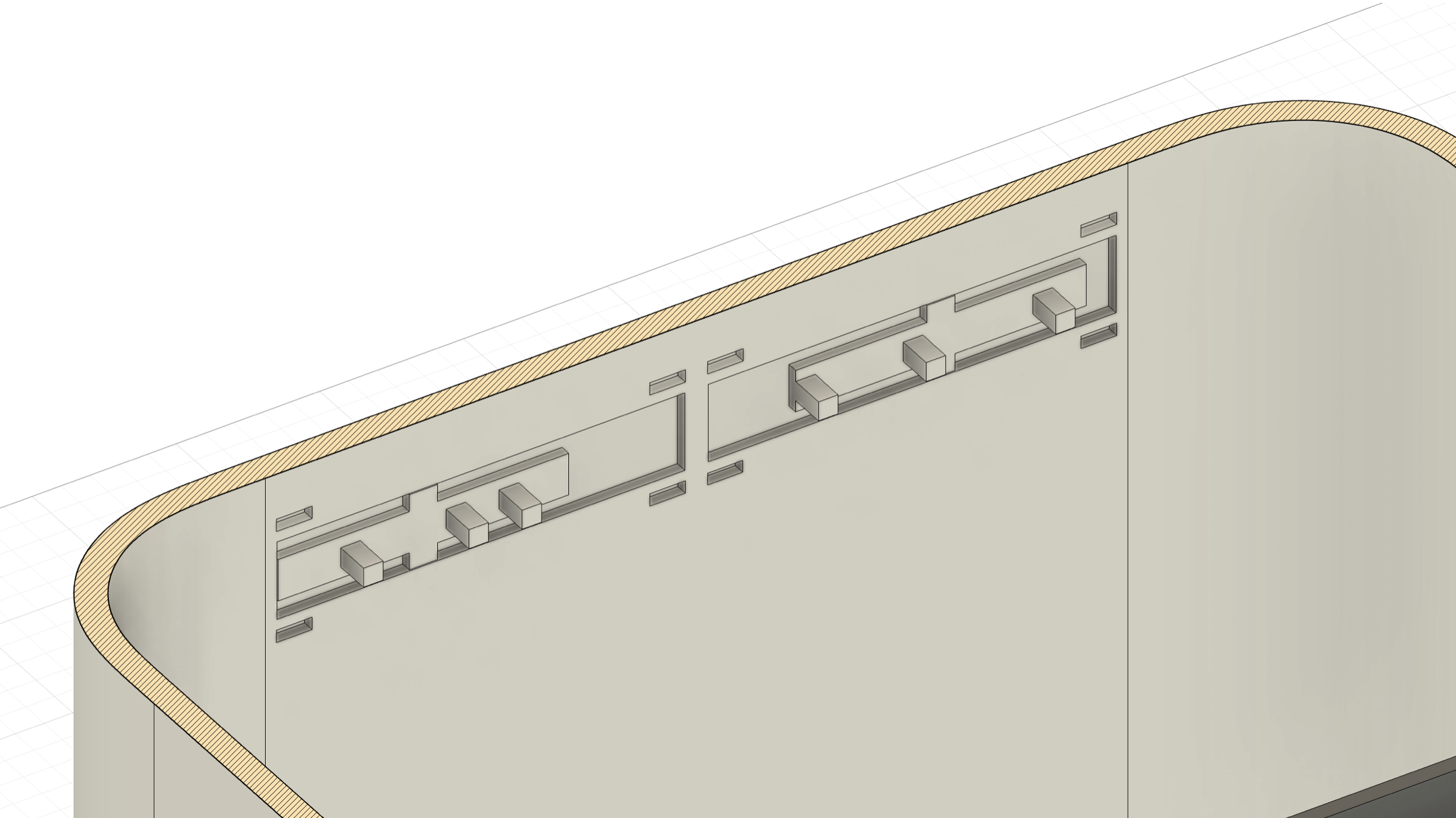
THE LID
As the first part of the box for the user to experience, the lid was designed to serve as a sort of “tutorial” for the rest of the box. As such, it was made to be very simple in appearance to guide the user towards the puzzles that are available to them. The box was designed with G3 surface continuity techniques to be aesthetically pleasing and make the box an attractive “coffee table” piece.
PUSH LATCH BADGE HOLDER
The top panel of the box (the Lumon logo) was designed using a mechanism inspired by a pen (and actually using springs from a pen). It springs up when pressed, and it is actually a wallet-shaped compartment that can slide off of the push latch’s tracks. Inside is an ID badge like the ones used on the show to gain access to different areas of Lumon. In this case, it is used to gain access to the rest of the box!
ID Latch
The front of the box has two rectangular sliders and a long slit. The sliders have small nubs to keep them from sliding out with gravity. In this state, they go through the inside of the box, keeping the lid pinned to the rest of the box. However, with the ID badge, the rotating panels behind the slit are able to push out the sliders, freeing the front half of the lid from the rest of the box.
LUMON LOGO SLIDER
The back of the box has two sliders that must be put in the correct location to allow the box’s lid to slide upwards. The track that these sliders are on is actually designed to be the Lumon logo, so, when the lid is removed, there is no evidence of what was keeping the box locked!
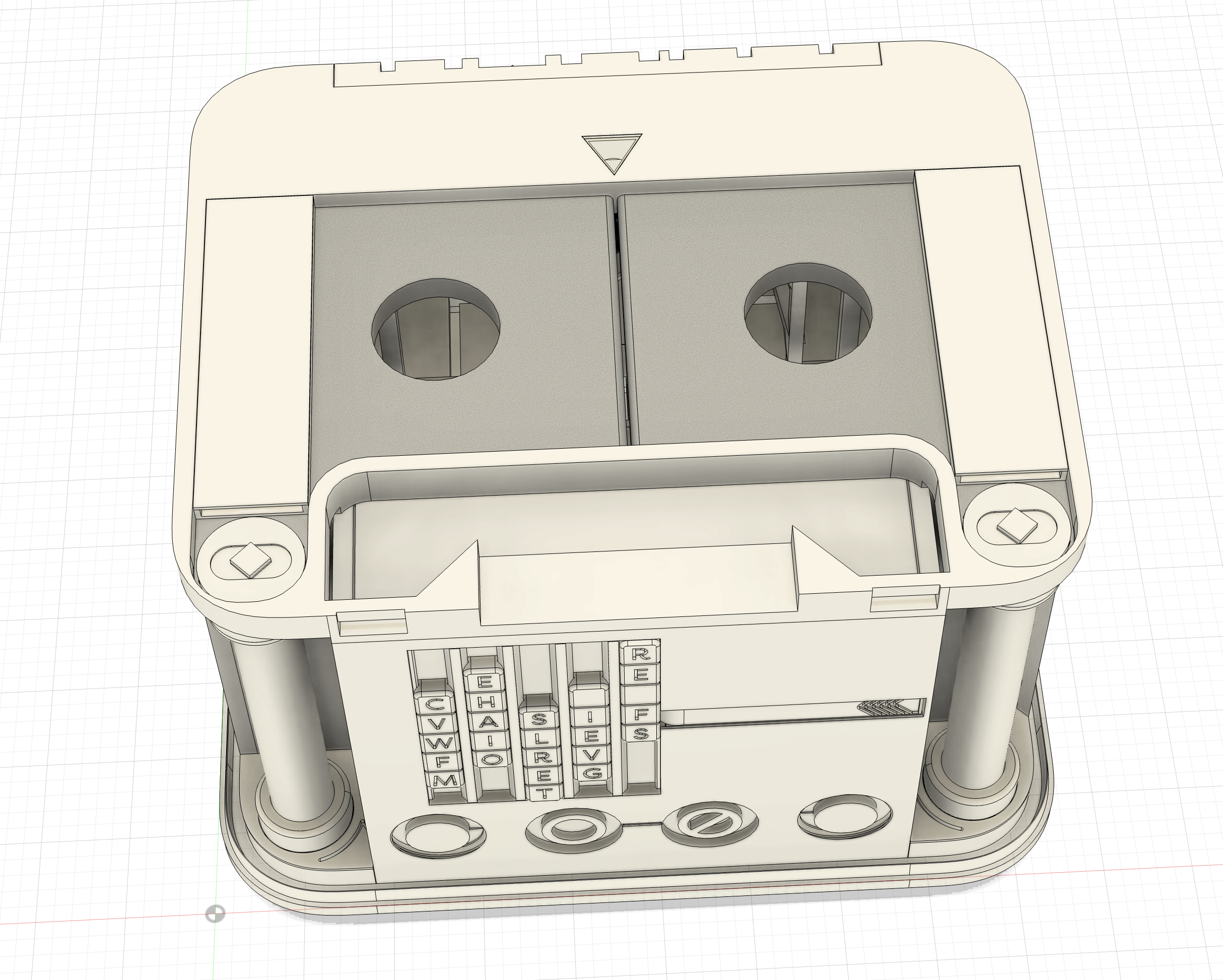
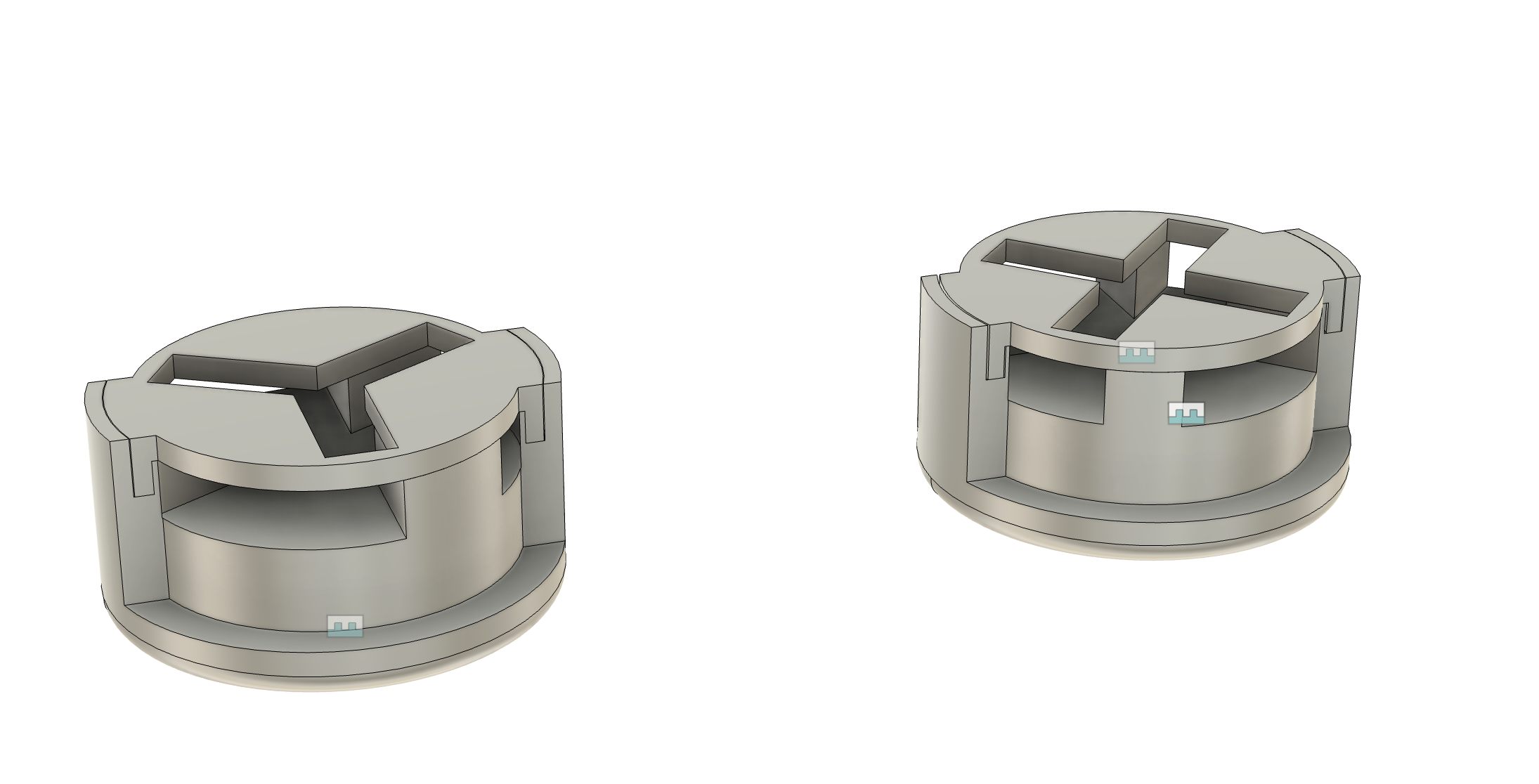
THE ELEVATOR
After the exterior lid is removed, the next barrier to the box’s contents is the elevator lid. Designed to mimic the elevator in the show, completing this next section of puzzles will cause the triangle above the doors to light up, then the lid can be removed.
X AND Y LATCH
Similar to the ID badge latch, rectangular sliders pin the elevator lid to the next level of the box. Rotating the X and Y panels with the column keys pushes the sliders out. The panel on the right has a magnet on it, which when rotated, will trigger a magnetically-activated light to flash red beneath the transparent triangle.
HIDDEN COLUMN KEYS
The front columns of the box serve as the keys to unlocking the elevator lid. The bases of both columns are actually screwed into the base of the box and are detached from the column itself (like collars). Unscrewing the column bases then loosens the bottom portion of the column. To free the tops of the columns, a collar must be removed vertically from the top of the elevator lid that was pinning the column to the lid. (This is blocked until the puzzles of the Brain Wall and Slide Puzzle Maze are completed.)
The keys themselves are designed with two layers: first a layer shaped like an X or Y, matching the shape that they will be placed on. The second layer is shaped like the partial revolution of that shape. This makes it so, at first, the rotation of the column doesn’t rotate the X and Y latches, it just makes the column key “lock on.” This way, the elevator lid can actually be lifted by the columns!
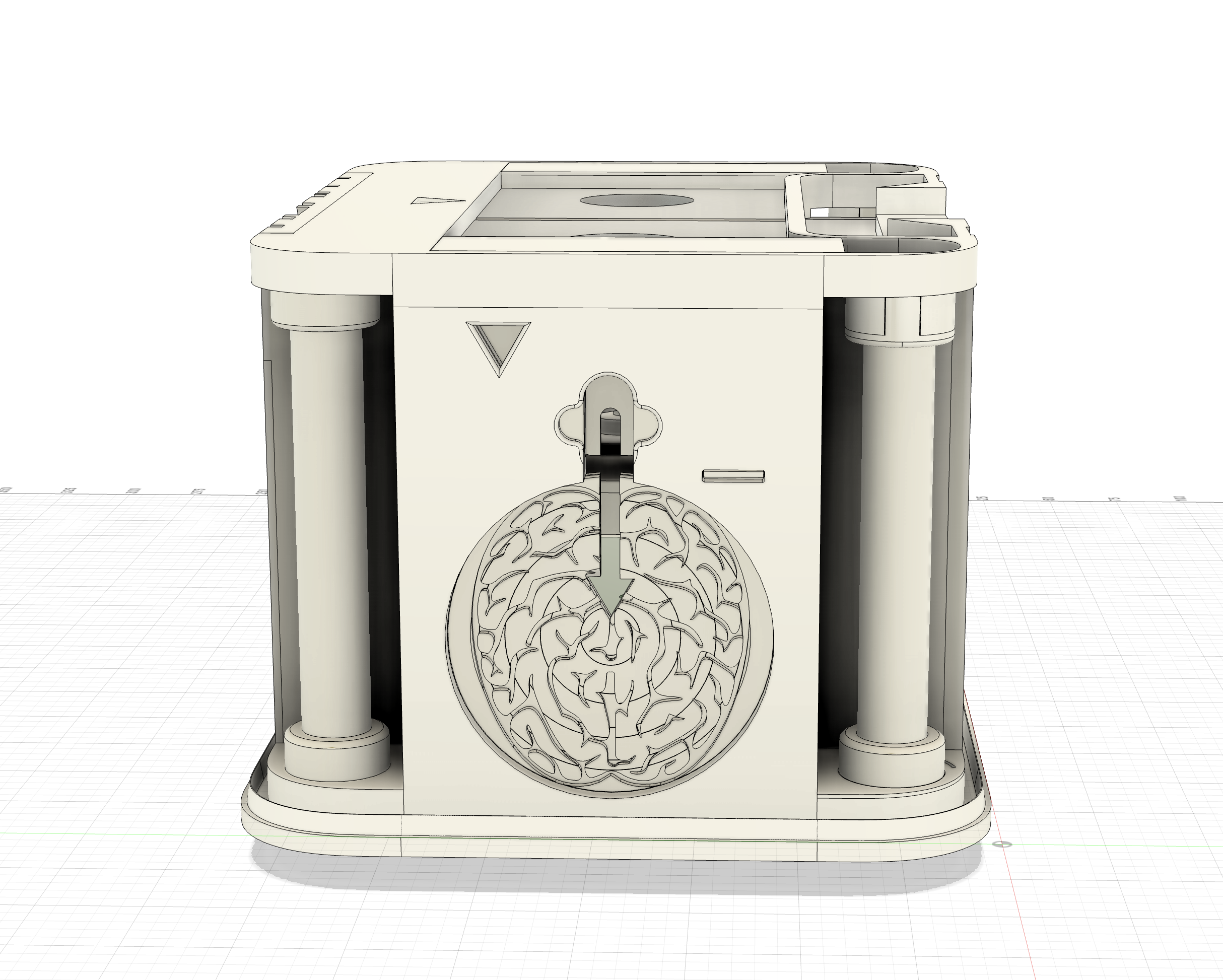
BRAIN WALL
The “brain” image is made on concentric rings, each chamfered to be held in by the next ring in. The chamfering gives an interesting effect when solving the puzzle, making it more three-dimensional. When the brain is lined up correctly, an arrow is formed that serves as a track for a “chip” token to slide into the brain (symbolizing the chip being implanted in the brain during the show’s severance medical procedure). The token is transparent and contains a magnetically activated light. The back side of the brain wall has magnets placed at the correct location to activate the light when the token reaches the middle of the brain. The token can then be removed and turned as a key in the triangular hole to allow the top collar for the first column to be removed (therefore allowing the column itself to be removed).
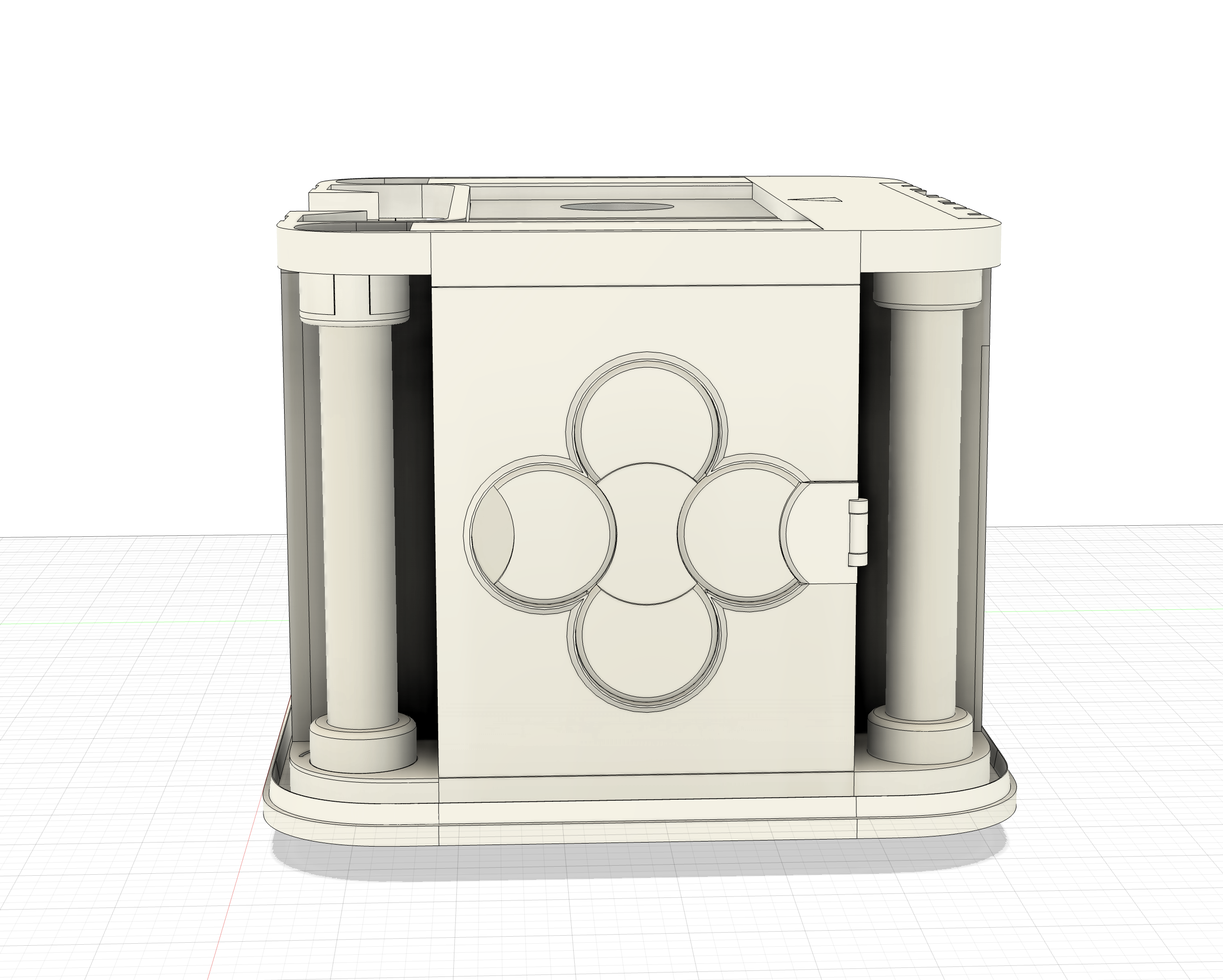
ROTATING DISC DOOR
This door is locked by a rotating disc, which is in turn locked by another set of rotating discs. When the discs are all aligned correctly, the clasp on the door can be removed, allowing the door to open on its hinges. Behind that door is the slide puzzle maze.
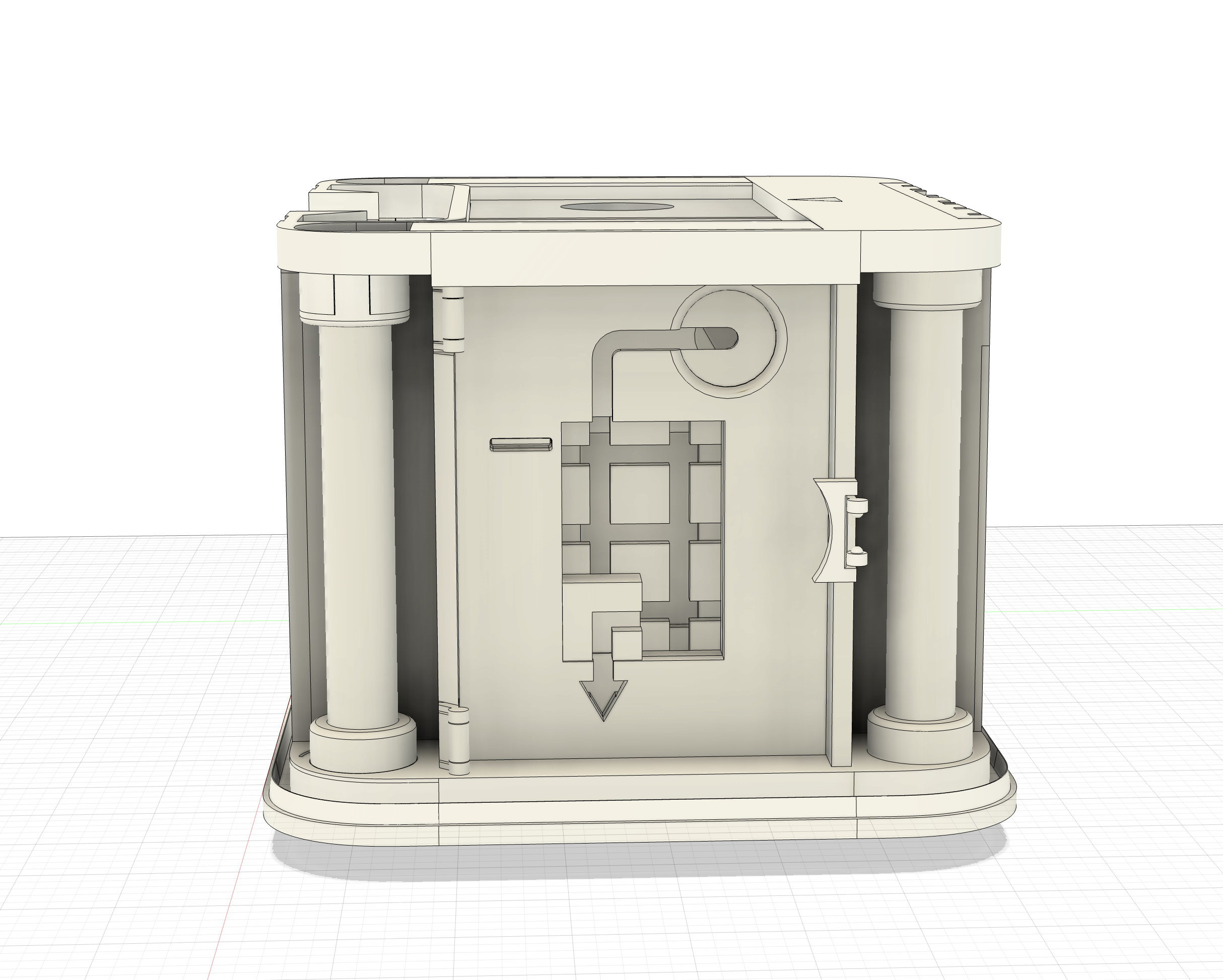
SLIDE PUZZLE MAZE
(Only one example piece of the slide puzzle is shown here, showing the grid track system that allows the pieces to move.) The token from the brain wall can enter the bottom. The pieces in the slide puzzles contain different tracks that the token can travel across. Eventually, the token can be made to go into the top track. The circle in the image is an indent that allows for the token to be pushed even further into the wall. It can then be used to rotate a component similar to the triangle hole of the brain wall. This unlocks the collar on the second column.
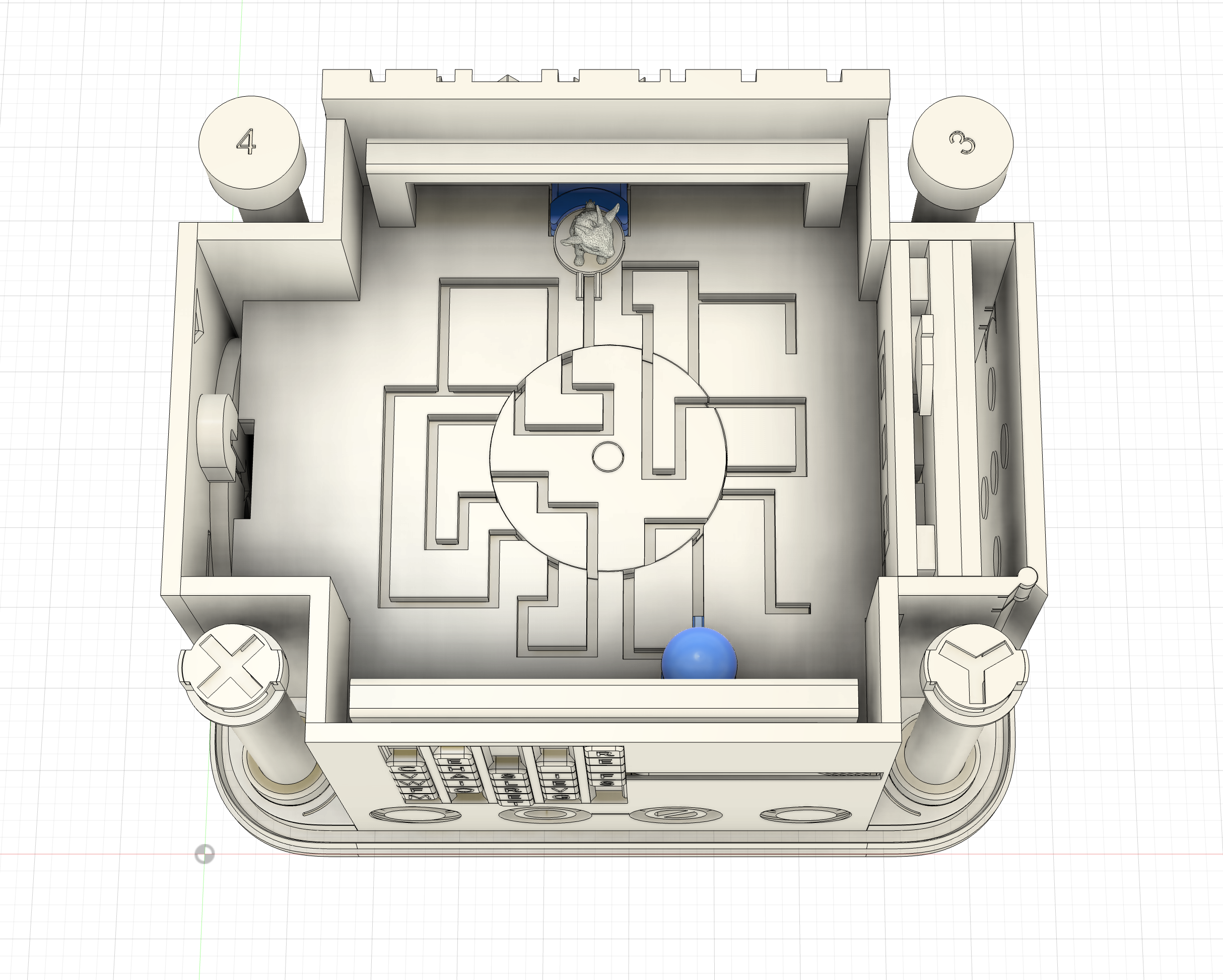
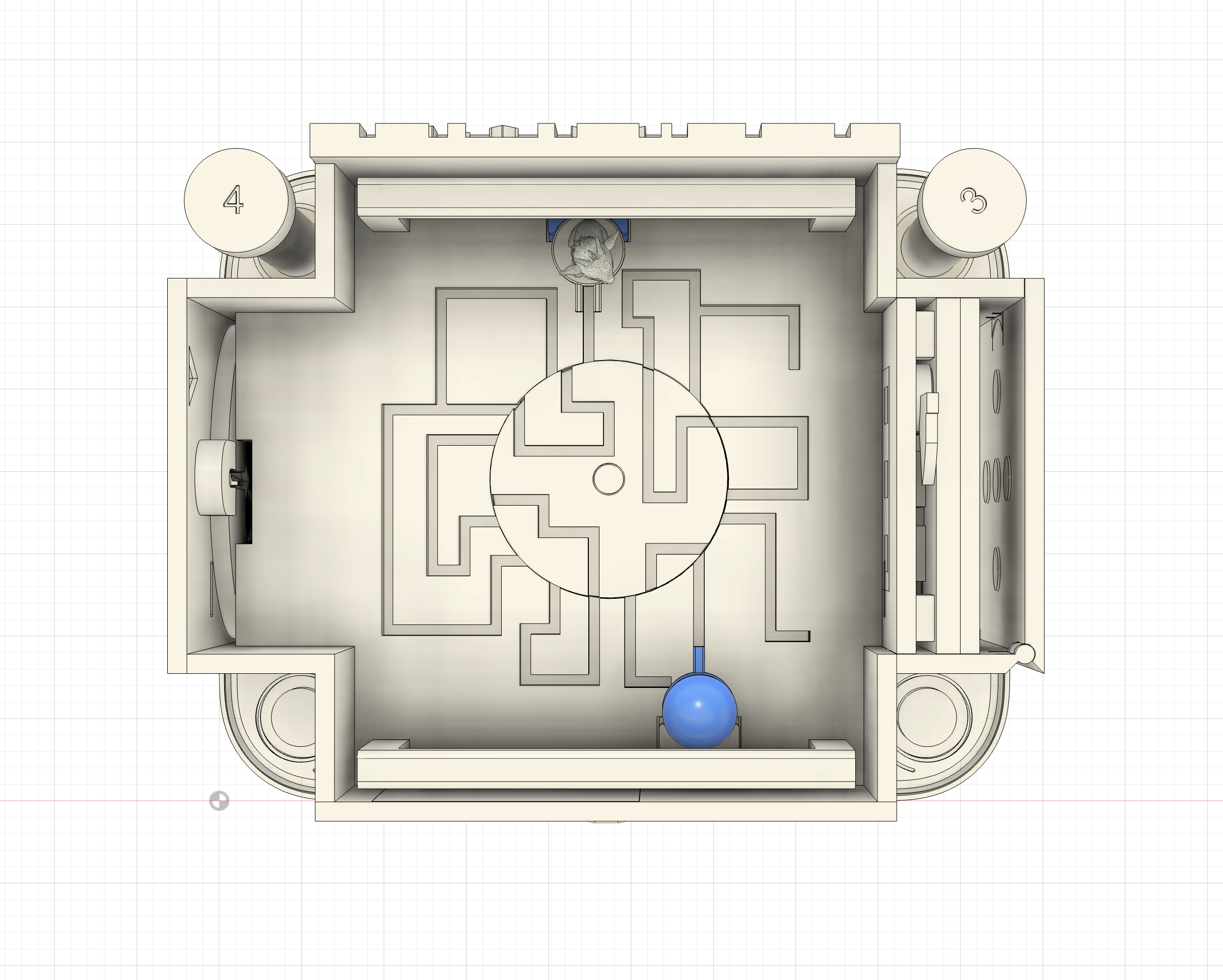
THE HALLWAYS
The goat and balloon tokens start in the spot that the other one must enter. Users must navigate the maze to get them to the correct location, but the middle portion of the maze rotates in 90º increments to create and block different paths.
MAGNETIC DETENT SELECTOR
The rotating disc has two magnets on it, with opposite polarities. It rotates on a base with a radial arrangement of 8 magnets with alternating polarities. The idea is that the disc can be smoothly rotated, but, upon release, is attracted to the 0º, 90º, 180º, and 270º positions while being repelled from the 45º, 135º, 225º, and 315º positions. The repelling magnets are stronger than the attracting magnets, causing the disc to be pushed quickly away from an invalid position and gently settle into a valid position. The magnets are not too strong to be very noticeable when rotating the disc; the user can do so freely. Once they let go, the disc just snaps to the nearest detent.
TOKENS AND PINS
This level is attached to the box with two thick pins on either side. Both must be released for the level to be removable. The pins can be pushed out using the balloon and goat tokens. The tokens are designed to, on their base, have either one or two protruding “arms.” These arms can go into a matching shaped channel to push out the pins. The goat token can only push out the goat pin, and the balloon token can only push out the balloon pin. The tokens are designed off of iconic moments in the show, and slide along the maze in a way that doesn’t allow the user to see the peg keeping them in the maze tracks, so it feels like they are just moving the goat and balloons through the Lumon hallways, not giving away the underlying mechanism.
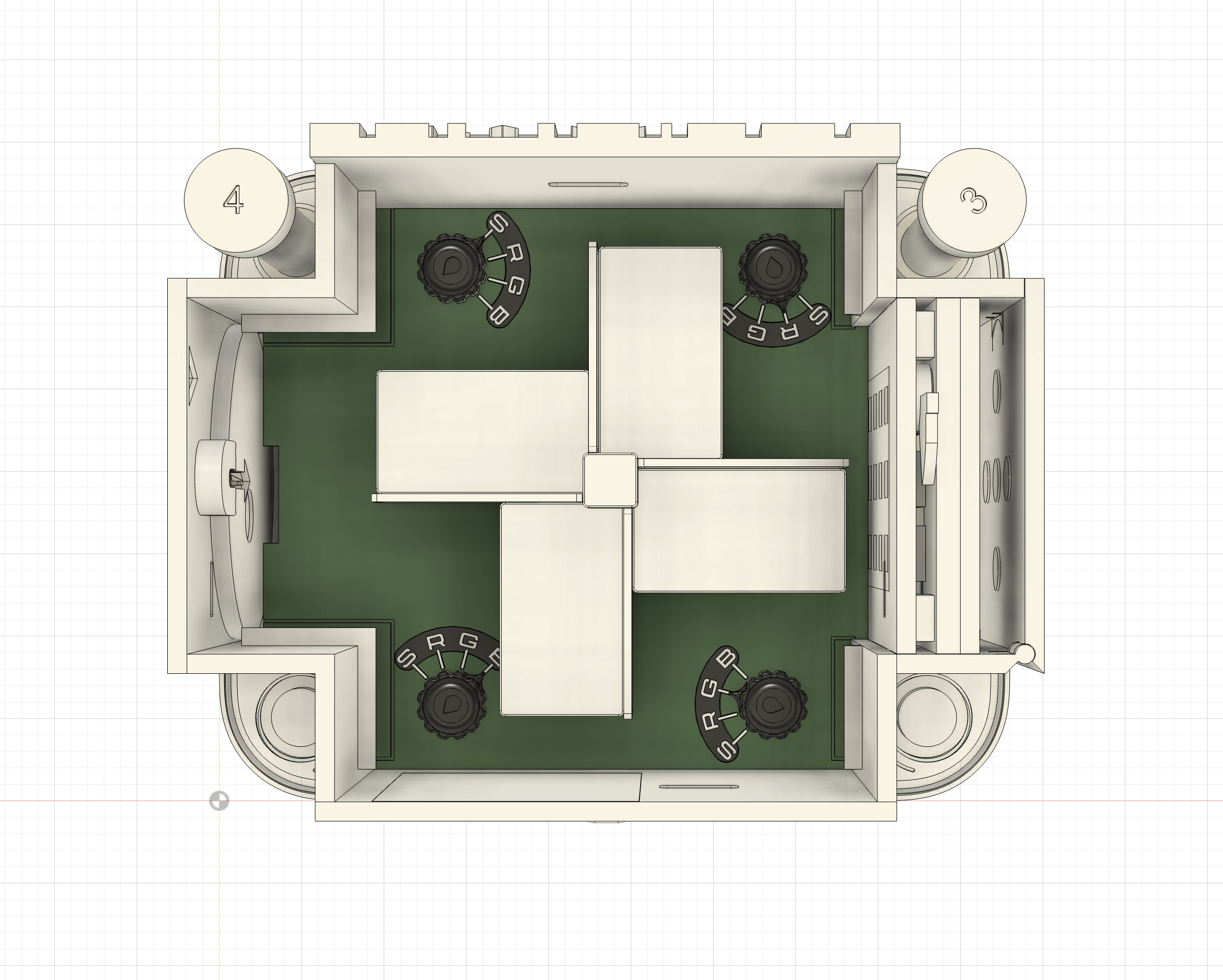
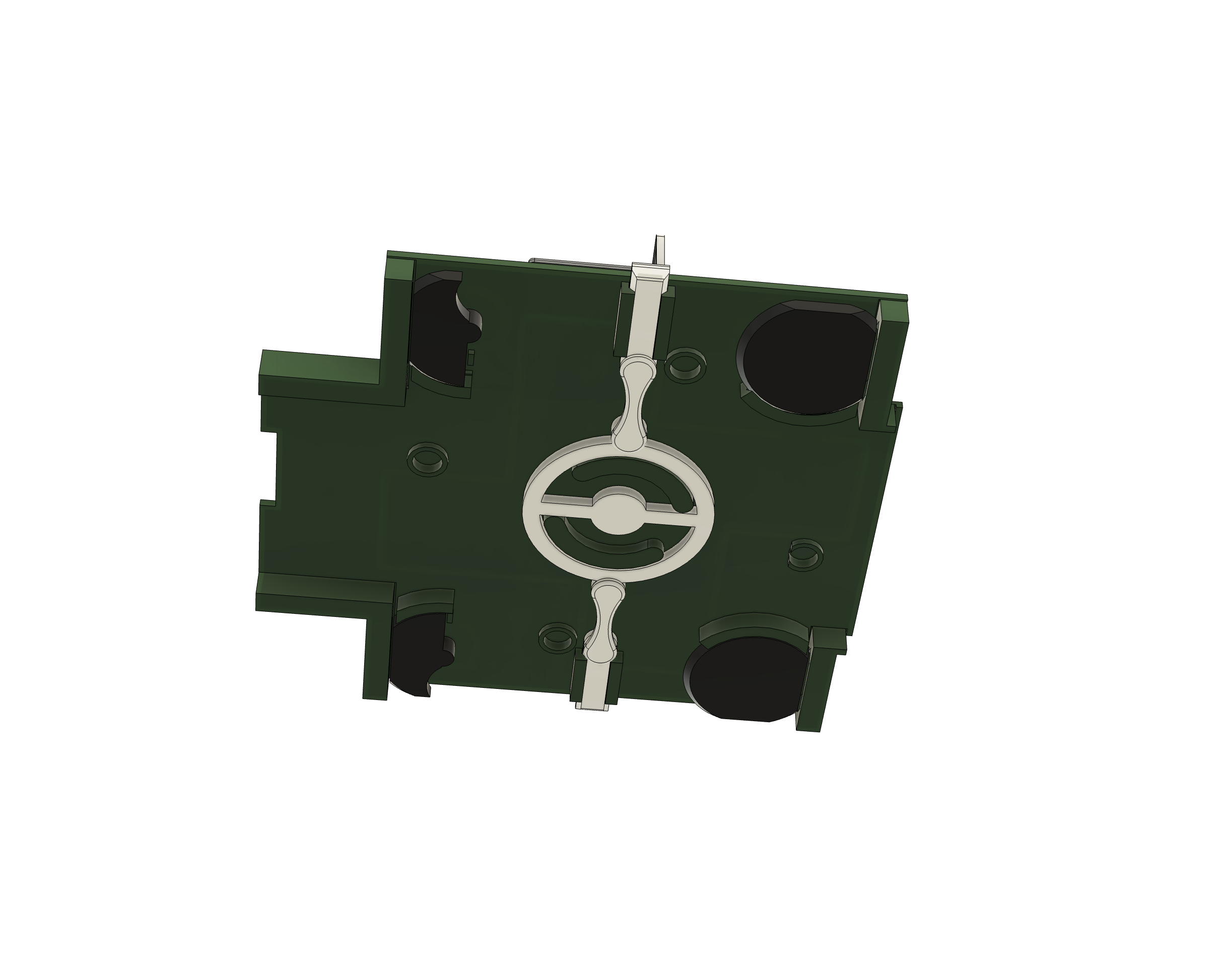
THE MDR OFFICE
ROTATING DESK LATCH
The iconic desk four-way desk setup from the Severance Macrodata Refinement Office was recreated, with the central post serving as the axle for a wheel that can rotate (like in the marching band scene from the show), causing the white latches in the above picture to slide out of their holes in the front and back walls. This does not allow the office to be removed if the corner dials are not yet in the correct positions. The cabinets of the desks have holes on the bottom for green and blue magnetically activated lights. Underneath the floor of the office are four magnets that cause the desks to light up when they are rotated.
CORNER DIALS
Each desk has a computer on it, with a monitor displaying a three digit code. With the help of the cipher wheel serving as the lazy Susan mechanism for rotating the box, the computers’ codes can be deciphered to determine who sits at each desk. The last initial of each individual can be selected with the four dials in the corners. The floor of the office sits on green shelves that stick out from the box (because the removable portion must be able to fit through the rest of the box vertically, including around the shelves for the maze level). These green supports, as well as the front and back walls, have slots that the black dials can rotate into. When the dials are set to the wrong letter, the dials slide into the slots and make it impossible to lift the floor. When they are in the correct spot, the floor can be lifted (provided the desks have been rotated to undo that latch).
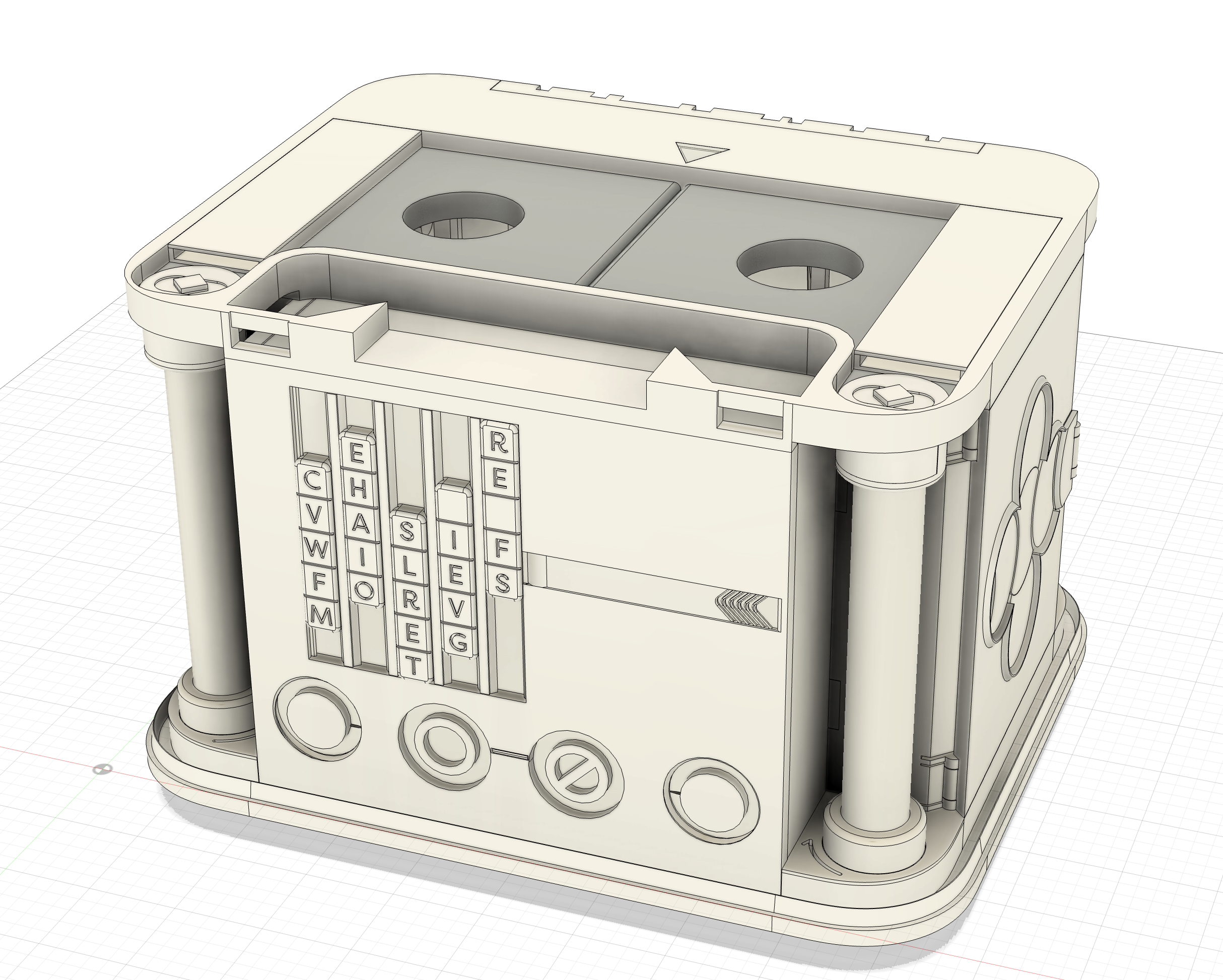
THE FRONT WALL
LETTER SELECT SLIDER
Five sliders with five letters each sit on tracks and can be slid up and down. Upon release, they fall to the bottom of the track, indicating something must be done to hold them up. There is no indication of where the letters should be aligned, which makes it harder to brute-force guess the word. The design of these sliders is intended to mimic the number grid of the Macrodata Refinement files (and the letters are set in the same font used in the show). It is also intended to subtly evoke putting a shredded document back together. The columns that are not used as keys (the back two) have removable caps, and actually contain the pieces of a shredded (and redacted) document. When reassembled, the censoring bars, when viewed from the side, spell out one of Lumon’s nine core principles: WILES, which is the answer to the puzzle. To input this code, you must align the letters from right to left, sliding in the bar piece as you go. Once completed, this allows you to
COLUMN CAP ROW
The two columns that have removable caps (to hide the shredded document pieces) can fit into the middle two slots. One of the caps has the same slash pattern on it as the third slot, so it can only fit into that one. The two screw collars that were unscrewed earlier can screw into the left and right slots here — since they are mirrors of each other, they can only screw into one or the other. The screw collars and column caps all have numbers on them, so a four digit code can be obtained by putting them into this wall.
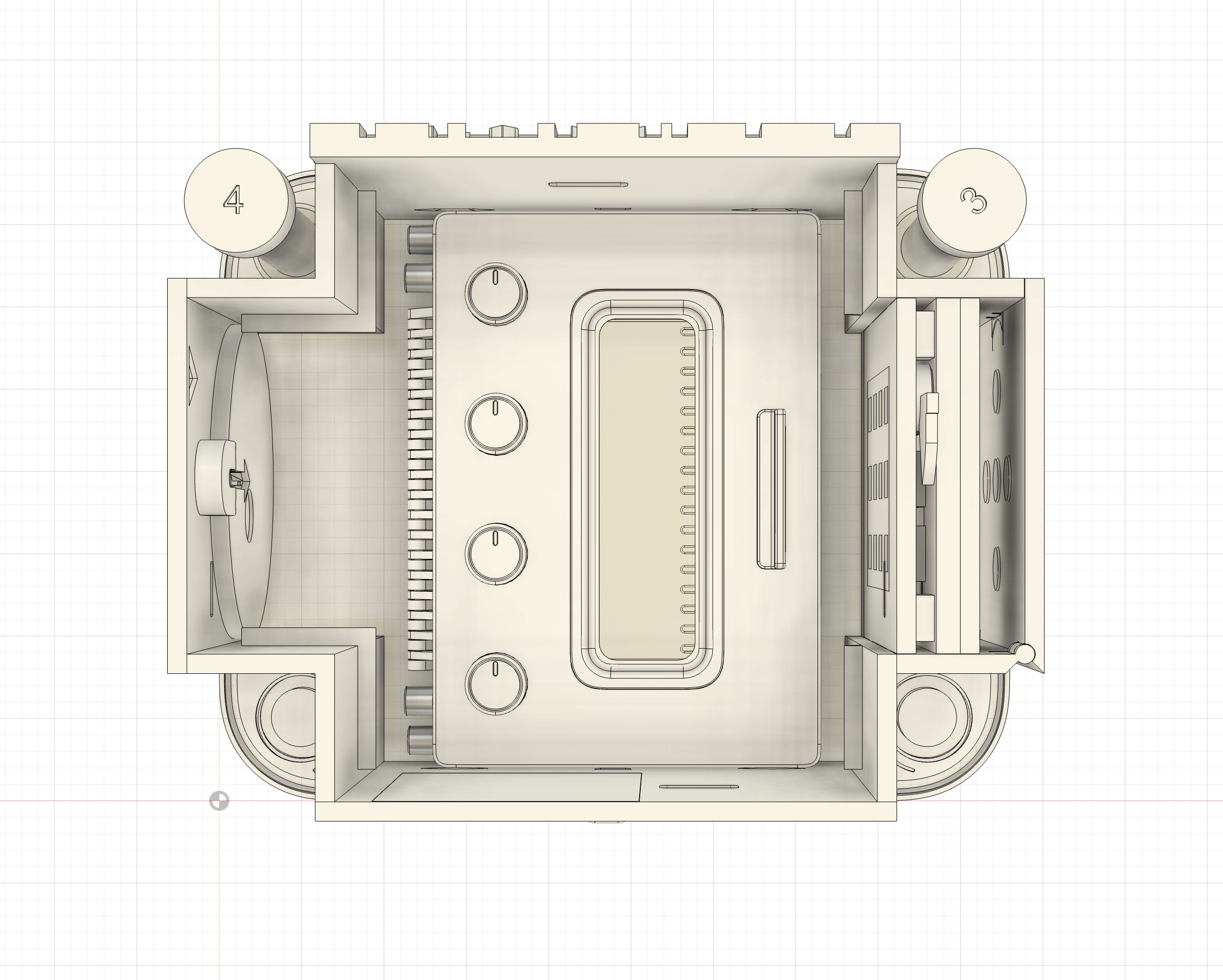
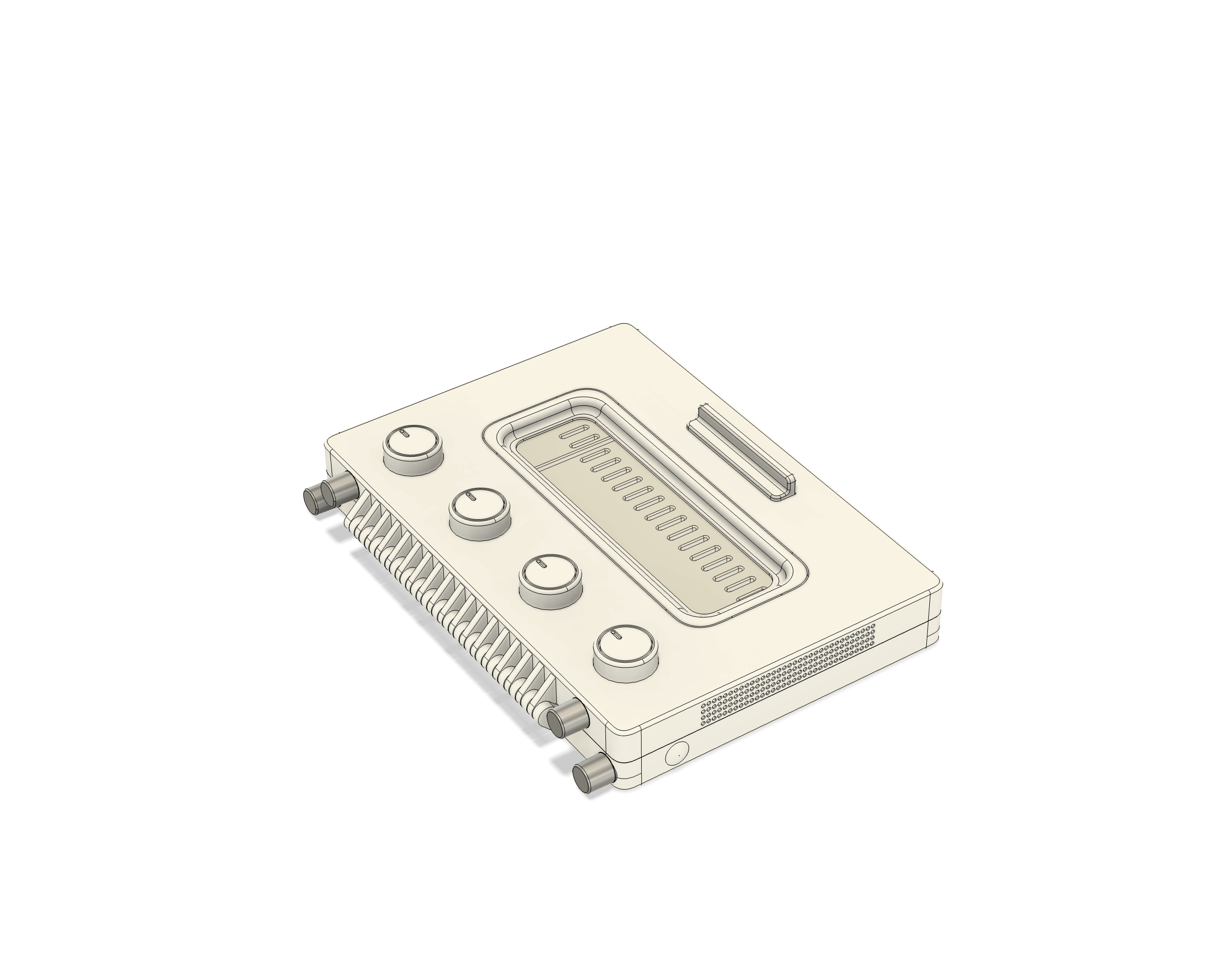
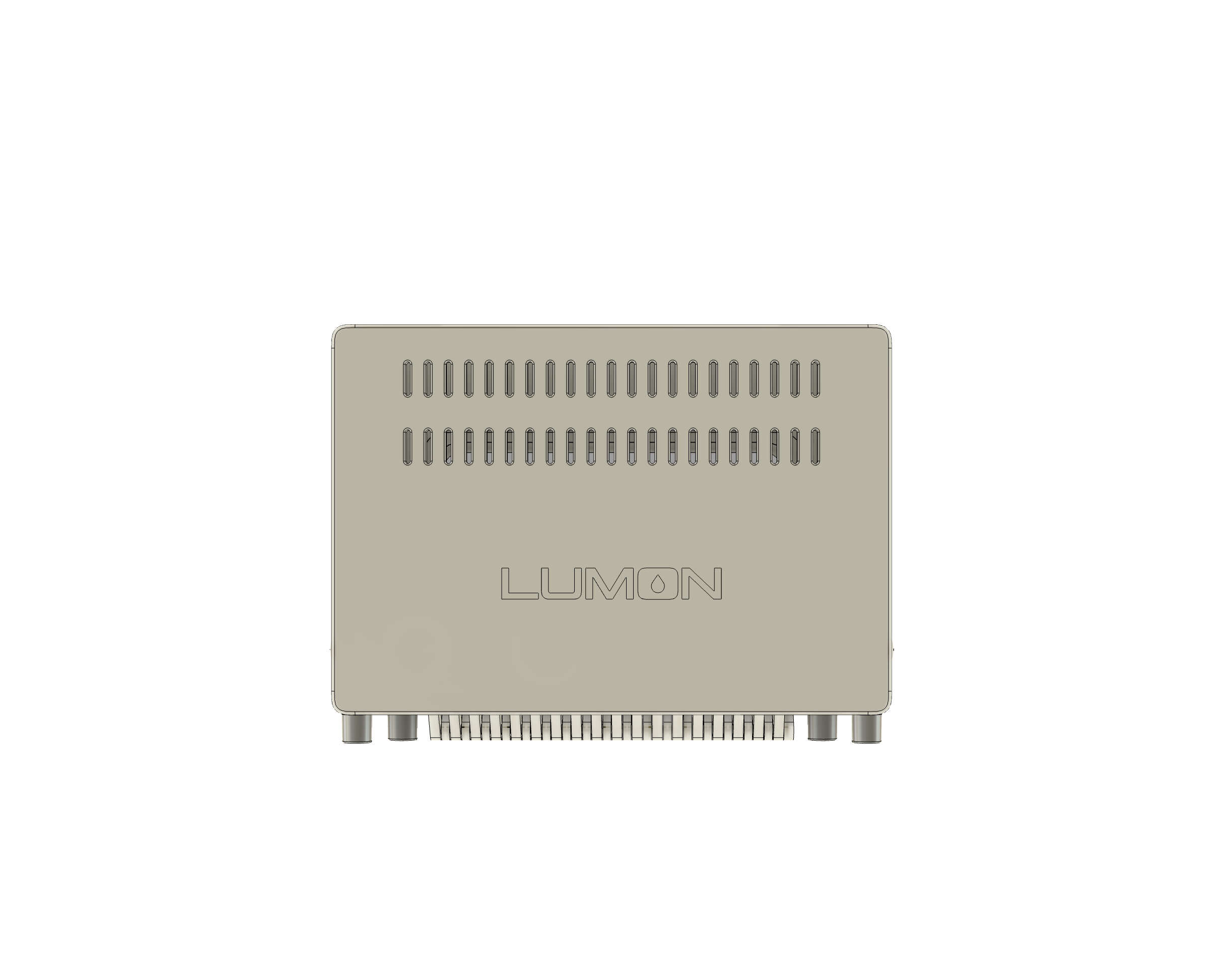
THE TOASTER
The toaster was designed inspired by a toaster seen in the background of one of the episodes, which was discovered to be a BALMUDA “The Toaster” painted entirely white. This version has four dials, and the code found from the column cap row can be entered on them to unlock the toaster. Within the toaster is a waffle coaster (this device is called the Toaster Coaster for this reason), themed after the ultimate perk received by the Macrodata Refiner of the Quarter: the waffle party! The toaster is locked via dials on the other side of the toaster knobs that go behind a seatbelt-like bar that goes over the toaster. When the knobs are at the wrong combination, the dials will hit the seatbelt and keep the toaster closed. When they are all lined up correctly, it opens easily.
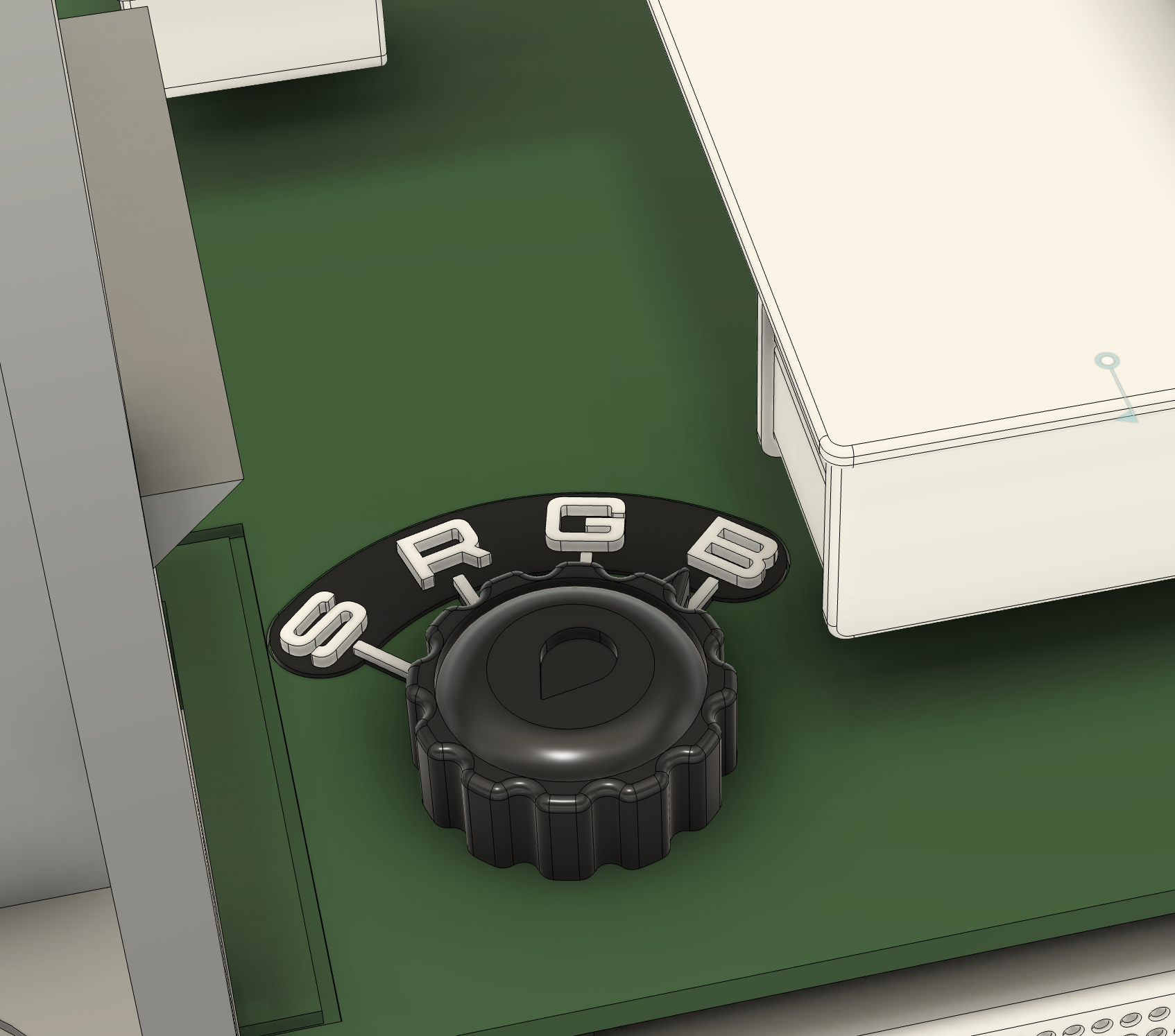
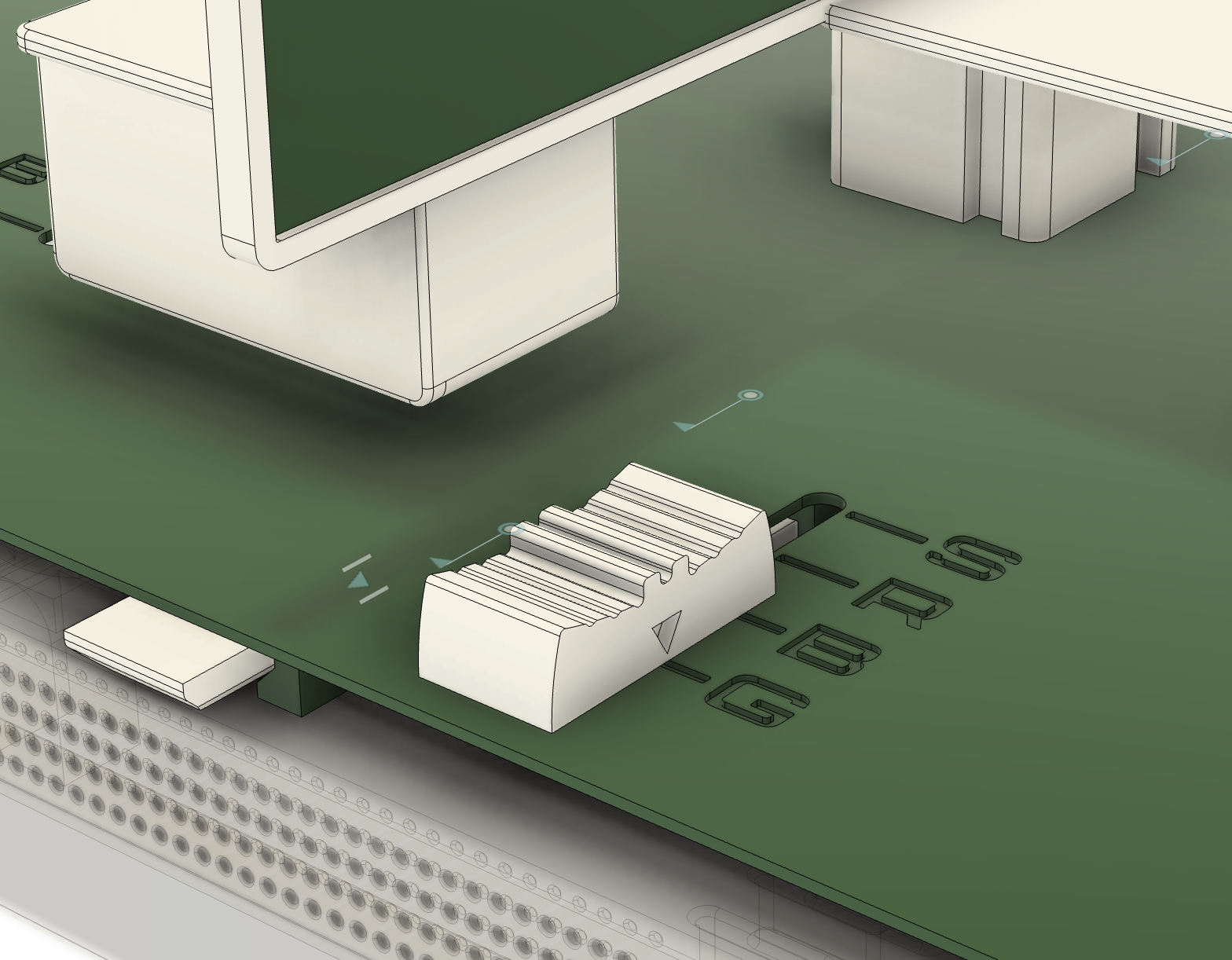
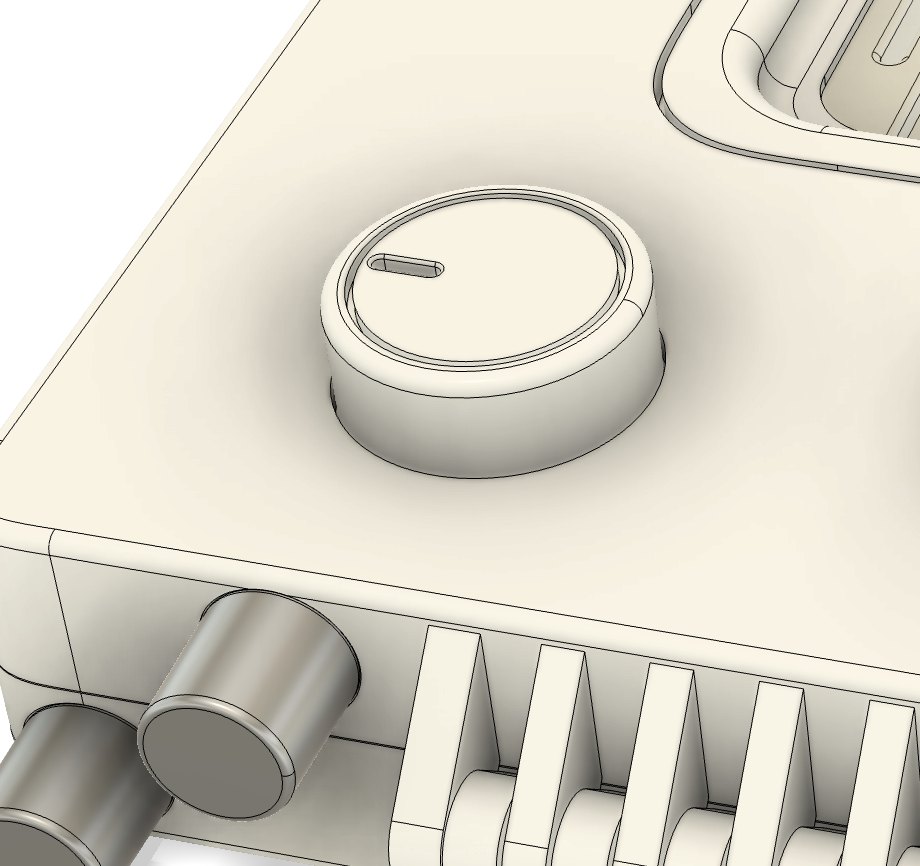
SLIDERS AND DIALS
The aesthetic of Severance is very specific, drawing inspiration from both retro and modern technology. The sliders and dials in the box needed to match this vibe, especially as they are what the user interacts with most directly. Research was done on the machines used in the show, as well as on midcentury electronics, especially amps and radios. Based on this research, I developed a series of knobs and sliders made to look like they were manufactured by the Optics and Design department in Lumon, often trying to incorporate their water droplet logo. Everything was designed to be smooth and pleasant to the touch. Not every slider made it into the final product, but it was a really interesting study to hone in on such specific components, designing for direct human input.

